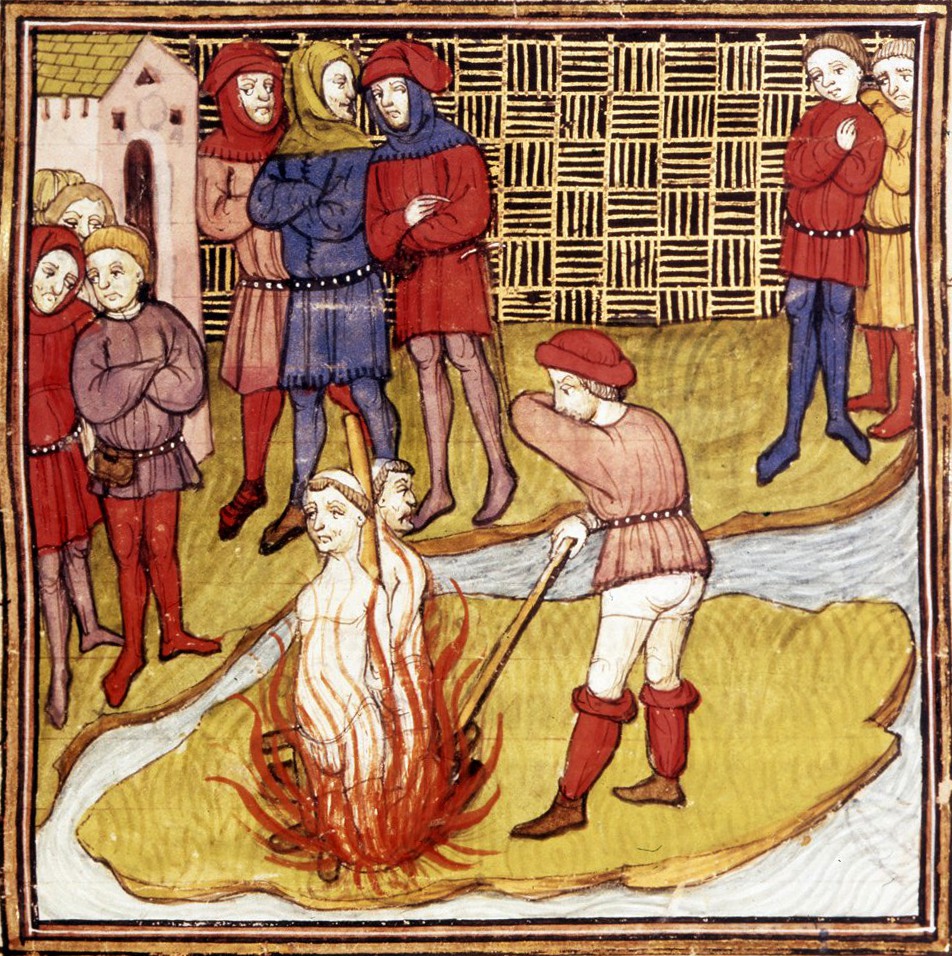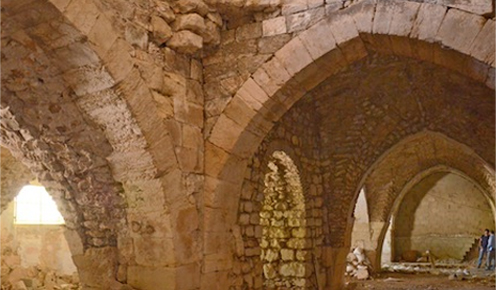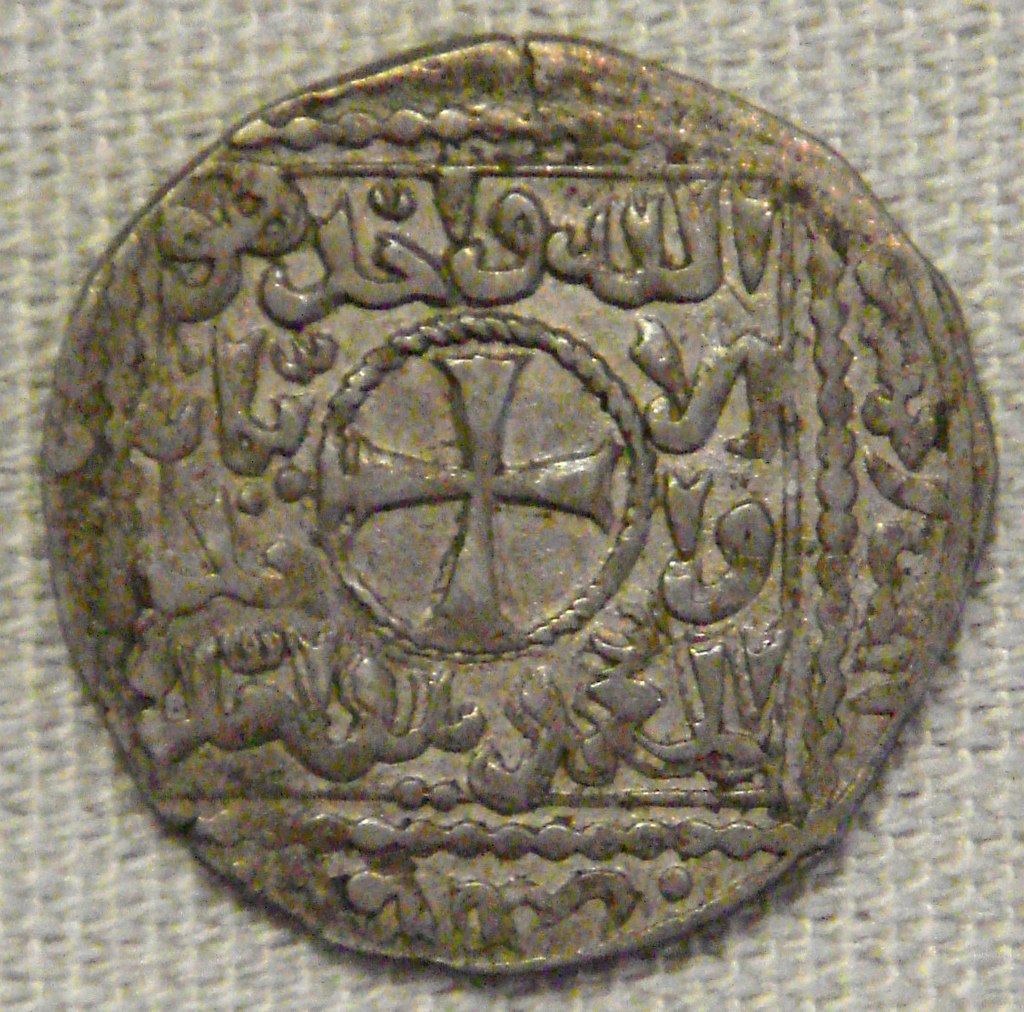The now Al-Aqsa mosque is the building that, with its surroundings, was in about 1120 made available by king Baldwin
to the newly formed group of knights of the "Poor Fellow-Soldiers of
Christ and of the Temple of Solomon", later simply called Templars. In 1845 Addison described its preceding history as follows.
The site of first Templar House on Temple Mount, Jerusalem
Tempelgesellschaft - a modern free Christian Community
Support TemplarsNow™ by becoming a Patron, tipping us or buying one of our Reliable Books
An Analysis of Prophet Muhammad’s Covenants with Christians
"This article examines the roles that religious pluralism and civic rights played in Prophet Muhammad’s vision of a “Muslim nation”.
The role of women in the Military Orders
Knights Templar Mass at Lier, Belgium, March 2010
On Sunday March 28, 2010, at the Holy Cross Church at Lier, Belgium, the "Orde Supremus militaris Templi Hierosolymitani militiae Christi Oecumenis Belgicae" held its annual commemoration mass for deceased borthers and sisters of the Templar Order.
At the same event a new Knights Sword was consecrated. In the future thus Sword will be used to knight new member of the Knights Templar.
For further information go to www.osmth-mco.eu
The Rule of St. Benedict Compared with the Rule of the Templars
Jerusalem Temple Mount: The Charles Wilson and Charles Warren map collection
Note "Salomon's Stables" in the right hand corner (the dotted pattern), which probably were used by the Knights Templars, while their House was at what now is the Al-Aqsa Mosque, located near the southwestern tip of the Temple platform.
Source www.bible.ca
Support TemplarsNow™ by becoming a Patron, tipping us or buying one of our Reliable Books
Frisian ("Dutch") participation in the Crusades
Interreligious protection of the “people of the book” - theory and practise
Economic and religious independence of the Knights Templar
"Independent and permanent, (made so by the papal bulls Omne datum optimum (1139), Milites Templi (1144) and Militia Dei (1145), TN) the Templars needed the means to sustain themselves. As defenders of the goods of the Church it was appropriate to exempt them from the payment of tithes, while at the same time giving them the right to acquire them, provided that they had the assent of the bishops and their clergy.
The militarisation of the Hospitallers, mid 12th century
"Gerard, a native of Provence, was at this period (start of the 12th century; TN) at the head of the society (of the Hospital of St. John; TN), with the title of “Guardian of the Poor.” He was succeeded (A.D. 1118) by Raymond Dupuy, a knight of Dauphiné, who drew up a series of rules for the direction and government of his brethren. In these rules *) no traces are discoverable of the military spirit which afterwards animated the order of the Hospital of St. John. That changed.
Foundation of the Hospitallers of Saint John at the end of the 11th century
Papel bulls and the Knights Templar summarized
Great Priory Knights Templar International, Paris, 2012
Video of the Great Priory of the Knights Templar International Chapter of France held in Paris, 16-18 March 2012 "Remembering the Grand Prior of Jacques de Molay".
Souce YouTube.
The Templar Seal
Promo-video OSMTH Knights Templar Belgium
Knights Templar and Papal bulls: Militea Dei (1145)
Militea Dei’, the third of the papal bulls, issued by Pope Eugenius III in 1145, is very similar in both content and style to the one year older earlier ‘Milites templi’ (1144). The bull begins with praise for the knights’ efforts for the eastern church, drawing attention yet again to important military task the Order was saddled with. The bull moves on, much like the bull before it, to compel the clergy again to gather resources for the Templars.
The Templar force counted
The early years of the Knights Templar - 1104 - 1120
Before this period that covers from 1104 through 1120...what occurs during this period? This prehistory is the dark era of these knights. How did they support themselves?
As we shall see they had more than ample support, powerful support such as no other group of this sort ever counted on, not even the Deacon of St. John Hospitalier, to take off with such self assured success. They had economic power, they had hosts, they had lawfull cover. Later would come donations that miraculously multiply upon being accepted at Troyes. Their logistics and marketing worked marvelously.
Their provenance was made up of members of royalty and from the different noble houses of the Franks: Burgundians, Normans. etc. made the rest an easy passage of alliance with the highest spheres of the church, perhaps as Mellado says about its early ambition having no measure, perhaps it was not all bucolic and romantic as it has passed on in the annals of its first history.
It is a natural understanding that prior to this time there was already a formation “in testing” since previous years. How many? Not known, but logic prevails and we must yield and honor the closest hypothesis based on archival documents that were consulted. If my conjectures are correct (and there is no authentic proof to think that they are not possible) we could be talking not of the nine years of its existence until Nablus. If we count 1104 as the year of its conception until 1114 when it is already constituted and is put into practice upon the arrival of the Hugh’s, in that year, until 1120, when its officially recognized at Nablus, some 16 years had transpired that would encompass the novitiate, the temporal acknowledgment; the creation of the Brotherhood or congregation in the aforementioned Synod. It can be stratified in six different periods.
- Ideological and embryonic phase from 1104 until 1107, in which the creation of a police force is perceived as necessary. Creative steps are taken that leave Godfrey of Sainte-Omer tasked with its creation.
- Formation of the Militia Christi phase, incorpora-ting same with knights related to the conquerors that take Palestine as the new promised land, there whe-re the mister nobody’s can become someone, forcing that social stratification (35). In the long run, the church had served on not few occasions as a means of social climbing.
- Phase of activation with the presence of the Hugh’s from 1114 to 1120, where their relationship would be without rules,habits, monastic vows, no depen-dency on military or ecclesiastical authorities, bound only by the particular and personal oath of each of its members. Here we may apply from William of Tyre who wrote “the knights wore secular garb, they wore clothing such as all folk wear...”
- Foundation phase, Synod of Nablus (1120, TN) of the congregation or brotherhood, with a proper name, rules, dwellings, monastic vows, uniformity, disciplines, etc.,
- Acceptance by the church at Troyes phase (1129, TN). The Creation of the Order.
- Definite consolidation of the Order in 1139 by the Omne Datum Optimum Papal Bull.
(...) Thus the date of creation of the embryonic Templars, would be around 1107/1113, (...) From 1114 until 1120 is the recruiting phase. In 1120 the Brotherhood is legalized and in 1129 the Order is created by the Holy See, and is confirmed in 1139."
This blog quotes from an article "The First Templar Knights (Part 2) - The origin of the Temple" by Josè Maria Fernandez Nùñe in the December 2015 OSMTJ Spain The Graal Magazine to be downloaded here. The text and interpunction was slightly improved and clarified. For references see the original text. Illustration King Baldwin meeting Hughees de Payns source
Carta caritatis: the Cistercian constitution - blue print of the Templar rule
"‘Carta Caritatis’ (also known as the Charter of Charity) is a Cistercian source that is considered ‘the fundamental constitution of the Cistercian Order.’49 There is much debate amongst historians as to when the charter was actually written.
Many historians, including W. A. Parker Mason, believe the charter was completed by 1117, however, the modern historian, Lekai, argues that such a document would have taken decades longer. The work is generally attributed to Stephen Harding, the third abbot of the Cistercian Order, though modern historians agree that he was probably the author of only a primitive version of the source, and that the ‘Carta Caritatis’ was expanded by later generations, as and when it was appropriate....
At face value, the ‘Carta Caritatis’ is startlingly reminiscent of the Rule of Saint Benedict in its structure. However, while the Rule is a guide to how monks live their lives in the monastery, the charter reads much more like a legal document, not a guide, but an order. Thecharter is considered the Cistercian constitution due to its regulations for an intricate network of Cistercian houses. The formation of a constitution illustrates how quickly and rapidly the Cistercian Order had grown, no matter what part of the twelfth century it was written. The complex organisation and the mention of daughter-houses having daughterhouses of their own is testament to this."
This blog quotes freely from the thesis by Lori Firth, Hull University (2012): "A Comparison of the Cistercian and Knights Templar Orders, And the Personal Influence of Bernard of Clairvaux", to be found here. Illustration By Jörg Breu the Elder - The Yorck Project (2002) 10.000 Meisterwerke der Malerei (DVD-ROM), distributed by DIRECTMEDIA Publishing GmbH. ISBN: 3936122202., Public Domain, Link
Religious fanaticism in the 12th Century Muslim camp
"The fiery zeal and warlike enthusiasm of the Templars were equalled, if not surpassed, by the stern fanaticism and religious ardour of the followers of Mahomet. “Noureddin fought,” says his oriental biographer, “like the meanest of his soldiers, saying, ‘Alas! it is now a long time that I have been seeking martyrdom without being able to obtain it.’
Religious fanaticism in the 12th Century Knights Templar camp
"The Templars style themselves “The Avengers of Jesus Christ,” and the “instruments and ministers of God for the punishment of infidels,” and the Pope and the holy fathers of the church proclaim that it is specially entrusted to them “to blot out from the earth all unbelievers,” and they hold out the joys of paradise as the glorious reward for the dangers and difficulties of the task.
Origin of the Cistercian Order: isolation and poverty
"The self-induced exclusion from the world discussed in the ‘Exordium Parvum’ is perhaps the first instance we see of the ideal of poverty, which became a part of the (Cistercian) Order’s mantra.
Knights Templar and Papal bulls: Milites Templi (1144)
The exemplary military conduct of the Knights Templar documented
"Brother Everard des Barres, the newly-elected Master of the Temple, having collected together all the brethren from the western provinces, in 1147 joined the standard of Louis, the French king, and accompanied the crusaders to Palestine.
The Templar Rule and the Cistercian influence
 |
The early Cistercians: back to strict observance of the Rule of St Benedict
"The ‘Exordium Parvum’ is a 12th century Cistercian document that includes the early history of Cîteaux, incorporating official letters and documents with narrative. While this source illustrates to us that the monks left Molesme to pursue a more rigorous devotion to the Rule of St Benedict, yet there is contrary evidence within the ‘Exordium Cistercii’ that tells us that the monks left for a new way of life because Molesme placed too much emphasis on materialistic wealth and possessions.
Gregorian reform at the root of Cistercian monasticism
"The Gregorian Reforms (initiated by Pope Gregory VII and the circle he formed in the papal curia, c. 1050–80, dealt with the moral integrity and independence of the clergy, TN). This reform inspired others to seek a monastic life far from the secular world and all its excesses and greed, to a life based around control of desire, and the strict discipline of the rules of the desert fathers.
Many new orders were formed, namely Benedictine and Augustinian. Of these new orders, it was the Cluniacs that dominated in the monastic aspect of the Church (which in the medieval period was much more significant). The Cluniacs sought to follow the Rule of St Benedict, taking vows of obedience and poverty. The importance of the Cluniacs in this innovative period cannot be understated; ‘At the end of the eleventh century, at the height of its magnificence, Cluny was the head of a huge monastic empire containing many hundreds of dependencies and associated houses spread throughout western Europe....
The Cistercian Order finds its origins in the Cluniac monastery. It was from the abbey of Molesme, that Robert of Molesme with other monks, including Stephen Harding, left in search of a monastic life of stricter poverty than had been seen hitherto by the Cluniacs....The Cistercian, though he lived a communal life, had his salvation very much in his own hands than his Cluniac cousin: he was expected to do more to eradicate his own sins than to pray for the forgiveness of others. This illustrates some other differences between the two reformist orders.
The early Cistercians sought an isolated place, rejecting the world, to pursue this vocation.... The history of the Cistercian Order is integral to the history of western monasticism....Indeed, the history of the Cistercian Order is so intertwined with the history of medieval Europe as a whole, that it is hard to identify which influenced the other more."
This blog quotes freely from the thesis by Lori Firth, Hull University (2012): "A Comparison of the Cistercian and Knights Templar Orders, And the Personal Influence of Bernard of Clairvaux", to be found here. References in this source. Illustration shows Pope Gregory VII source
Knights Templar and Papal bulls: Omne datum optimum (1139)
"To confirm the Order’s legitimacy in the Roman Catholic Church, three papal bulls (Omne datum optimum, Milites Templi and Militea Dei) were issued between 1139 and 1145.
The origin of the Cistercian Order by its own account: Exordium Parvum
The Order of the Holy Sepulchre of Jerusalem - contemporary to the Knights Templar
"The Order of the Holy Sepulchre of Jerusalem owes its origins to Godfrey de Bouillon of the first Crusade, who gathered around him a group of Knights who were entrusted with the protection of the religious Chapter of Canons at the Holy Sepulchre of Christ in 1100. Godfrey had been elected leader of the victorious Crusaders, but refused the title of King. Instead he took on the title "Advocatus Sancti Sepulchri" - "Defender of the Holy Sepulchre".
Reshaping the Equestrian Order of the Holy Sepulchre of Jerusalem - 1847 to present
The Approach of the modern Knights Templar OSMTH
Breaking away of the Church from the secular society in the 11th century
A Comparison of the Cistercian and Knights Templar Orders
The trial of the Templars summarized
"The trial of the Templars is one of the most sensational events of the high middle ages. Contemporaries expressed astonishment when, on the 13th, the day after the funeral, all the members of the order in France were suddenly arrested and accused of what amounted to the renunciation of the faith that they were supposed to be defending with their lives.
The Equestrian Order of the Holy Sepulchre of Jerusalem - non-military blueprint of the Knights Templar?
The Ribat, a muslim model for Christian religious militia such as the Knights Templar?
"The Templars were the first military order, a completely new, hybrid type of organization merging the hitherto mutually exclusive spheres of chivalry and monasticism into a single institution of sacred violence. Beforehand, chivalry and monasticism had been regarded as incompatible spheres. It was only at the beginning of the nineteenth century that the suggestion was first made that this order was inspired by Muslim institutions. Was that justified?
Cultural development in the Middle Ages: Barbarians, Christians and Muslims
"The Middle Ages were not only a period of European civilization. There was the western medieval period and that of the Eastern Empire, which still survived among the splendours of Byzantium for 1000 years after the fall of Rome. During those same centuries a great Arab civilization flourished, while in Europe there was a more or less clandestine, but very lively Jewish culture. The boundaries between these different cultural traditions were not as marked as people think today.
March 18, 2016 - 702nd Commemoration death of Jaques de Molay
Though little is known of his actual life and deeds except for his last years as Grand Master, he is the best known Templar, along with the Order's founder and first Grand Master, Hugues de Payens (1070–1136). Jacques de Molay's goal as Grand Master was to reform the Order, and adjust it to the situation in the Holy Land during the waning days of the Crusades.
| Death-site plaque of Jaques de Molay on Isle des Juifs, Paris |
source text and illustrations wikipedia.org
The Hospitaller Order - from caring to fighting
Origin and remains of the Hospitaller Hospital at Jerusalem
Templars at the court of the Counts of Flanders
Cistercian monasteries - preface to Knights Templar preceptories
Arab and Templar alliances, early 13th century.
The values of modern chivalry
German OSMTH Chapter supports an "Open Letter to the Governments of Europe" on refugees
"We, the front-line volunteers who for months now have been helping thousands of refugees, call on all the governments of Europe to act immediately and decisively to alleviate the situation. There are tens of thousands of people moving through south-eastern Europe and the current capacities of volunteer-based help sites are seriously challenged. Given also the rapid approach of winter and problems at various borders, we feel there is a real danger that the situation will lead to serious medical problems and likely deaths among the refugee community.
Every person has the legal right to seek asylum. If Europe is not able to provide safe and legal routes for asylum-seekers, it is obliged to provide aid to those who took the dangerous route. We do not want to see a single refugee dying while waiting in endless queues at European borders, literally in our own hands.
Volunteers have been providing a wide range of activities so far, in many places completely replacing the absent government facilities and aid. We are distributing food and water, undertaking crowd management, providing critical information about registration and borders, referring vulnerable people to UNHCR or medical services, caring for children, managing stocks of clothing and blankets, cleaning waste, raising funds and providing shelter to the most vulnerable few.
We have been doing all this for months in Lesvos, Athens, Gevgelija, Budapest, Röszke, Belgrade, Eidomeni, Hegyeshalom, Nickelsdorf, Wien, Salzburg, Heiligenkreuz, Zakány, Botovo, Calais, Preševo, Berkasovo, Bregana, Harmica, Trnovec, Mursko Središće, Bapska, Opatovac and a number of other places around Europe. We have proven that volunteers can do a lot, but we will be unable to keep thousands of people warm once the winter weather closes in.
Winter is coming quickly and we all have just a few days to respond in a humane way.
- We call on all European countries to provide immediate help to all those countries affected by the refugee crisis, instead of helping those countries that are building fences.
- We call for the building of safe reception and transit centres with facilities that can cope with the harsh winter conditions of the region.
- We also call for humanitarian aid to be delivered to the people that need it, for the provision of appropriate medical services and for the coordination of all efforts on a pan-European level.
- We also call on the EU to immediately implement other mechanisms which aim to provide safe passage to the EU.
We have done our best up to this point and we will continue to help for as long as is necessary. But now it is your turn, governments of Europe. Please respond and demonstrate to the world that humanity is still at the core of European values."
Illustration Arms of the Autonome Komturei OSMTH Regensburg "Leonhard von Noblat"
"Noble Knight" - the Scandinavian OSMTH Knights Templar on the refugee situation
Today a (shortened) Swedish-English translation of the position of the Scandinavian OSMTH Grand Priorate, published in the 2015-2 issue of their magazine "Tempelherren", downloadable from their website.
"An actual question: How good do we manage and cope with unexpected changes?
In recent months, we have in a most concrete way been reminded that we live in an incredibly fast changing world. A current example is the challenge we now face in the form of the huge stream of refugees that seems to have surprised all of Western Europe. It puts our decision makers faced with a difficult humanitarian dilemma.
The number of refugees that already came, and the number still underway, compares well to the crowds that were in motion un the Great Migration time. Only during the month of October it was estimated that some 220,000 people were on their way to Europe. (....) The majority comes from areas affected by war in Syria, Iraq or Afghanistan. Another part consists of young people that we do not directly classify as refugees or asylum seekers. They are coming from poorer conditions, seeking a better life. This has always been the case, but the numbers are higher now.
The functions and mechanisms which we have over the years set up in our societies for normal conditions are tested to the limit. More resources, action and new costly measures are needed to keep the grip. Expensive measures that many "Old citizens and taxpayers" are dissatisfied of, and which provide a breeding ground for a protectonistic mindset. Various rumors and populist half truths may, unfortunately, all too easily spread in the social media. Fear of the unknown,selfishness and ignorance create intolerance and excesses in the form of violence and hate speech.A frightening development in our communities that must be resisted.
A development that we, Knights of a 900-year old Order on the charitable and attitude level, should inlfuence into a more humane direction. It is in times like this that our Knightly Ethics are on trial. Our communities change and regardless of the opinions we may personally have on the issue, we shall in our Christian ethos stand tall in following our guide. We shall endeavor to objectively, in speech and action, assist the weak and vulnerable. What we experience in the ritual of our Order's chapter, we put in everyday life. Thereby, hopefully, creating respect for ourselves and our words. Every single act of kindness is the Noble Knight worthy! (....)."
Illustration from the 2015-2 issue of the magazine "Tempelherren" of the Tempelherreorden Storpriorat Skandinavien, downloadable from their website.
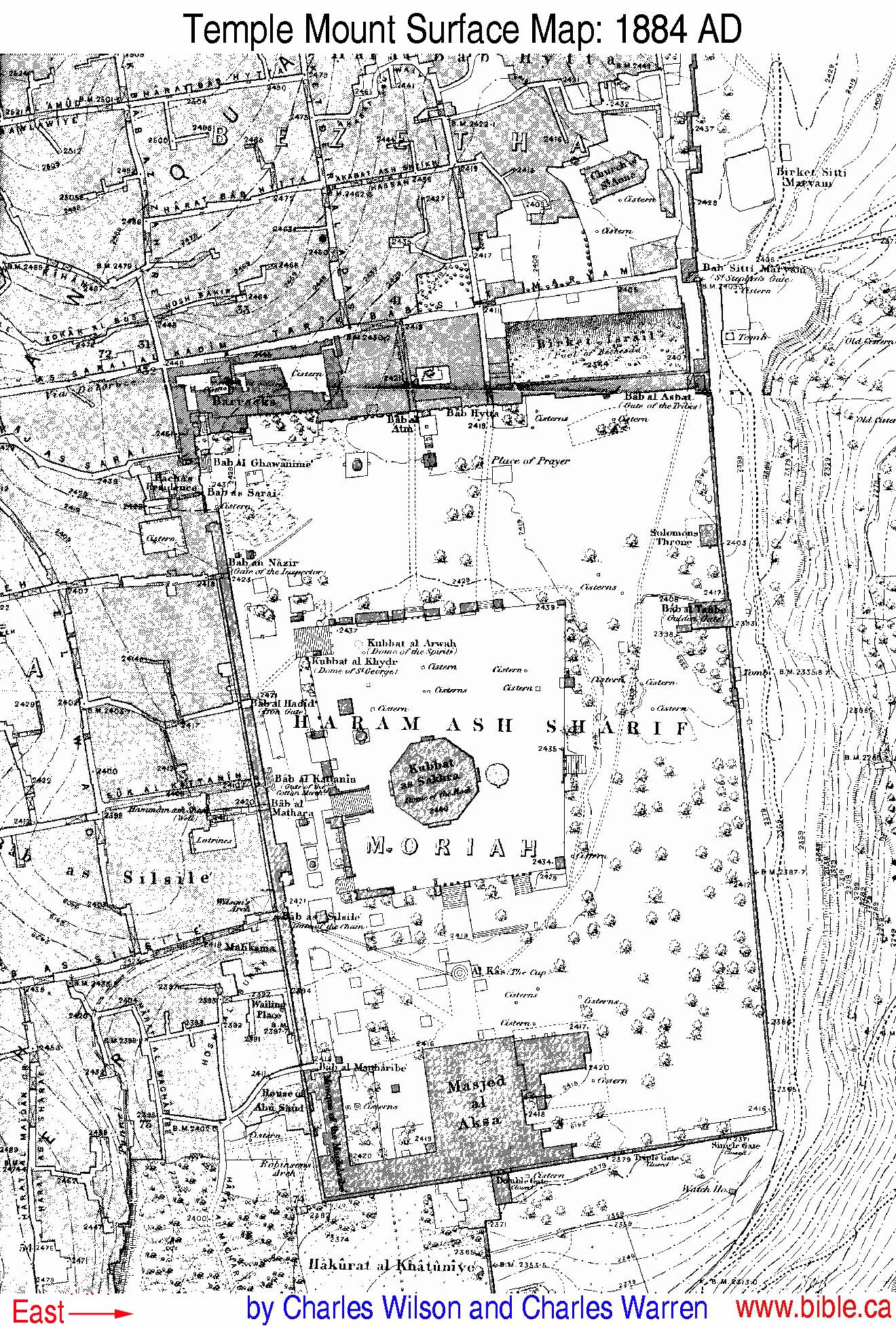



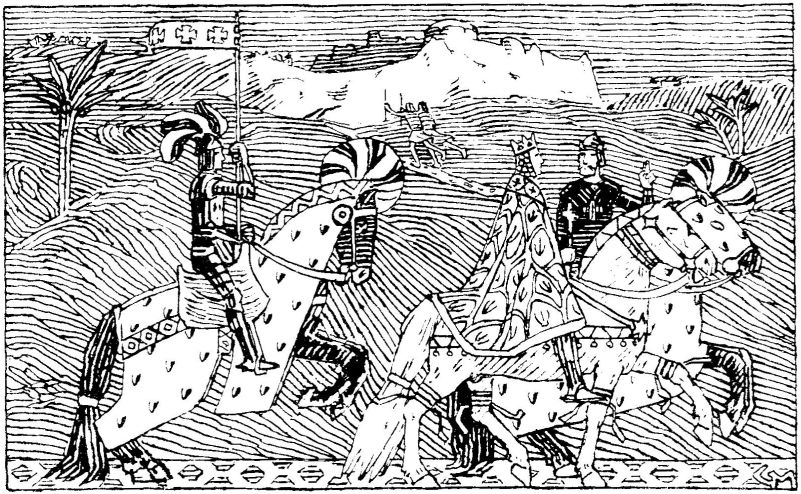
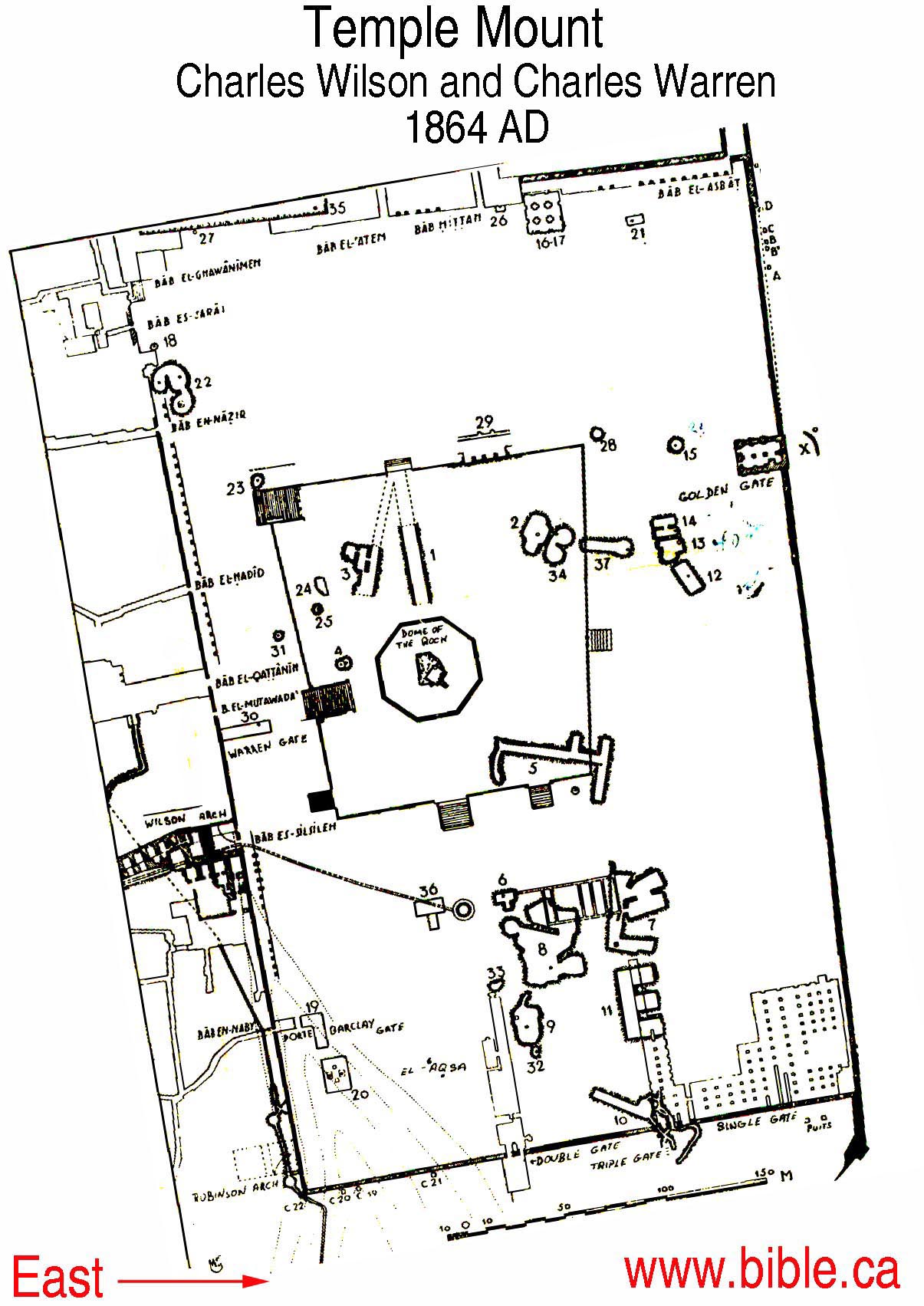
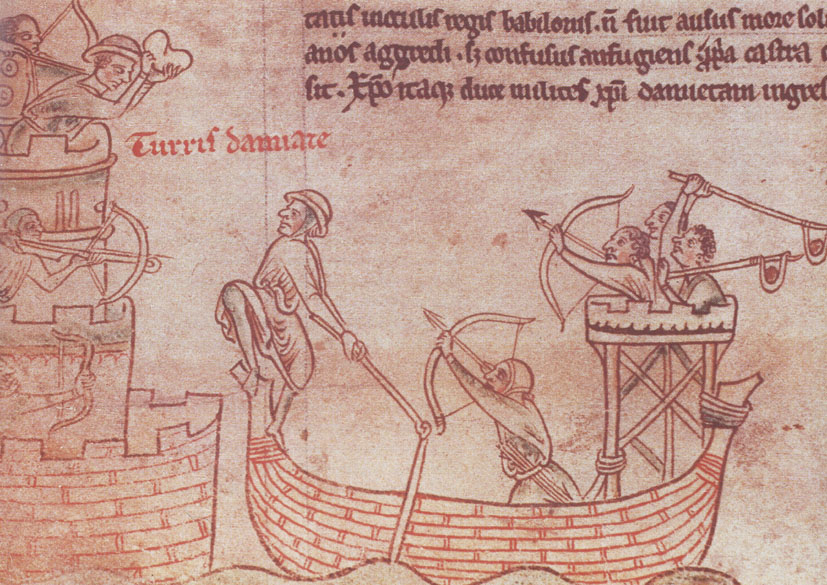


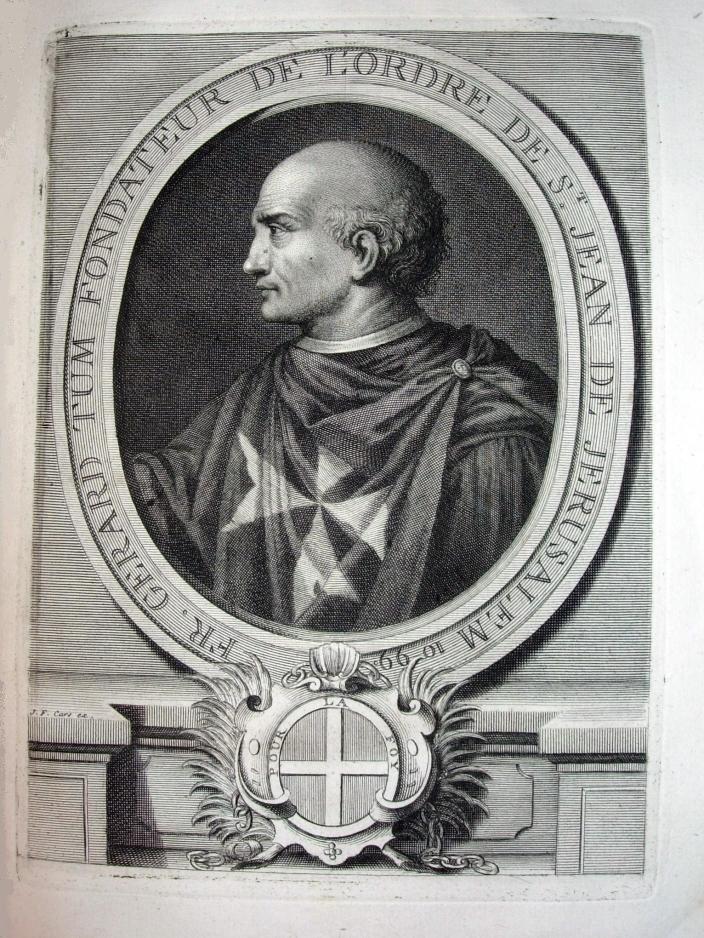



.jpg)
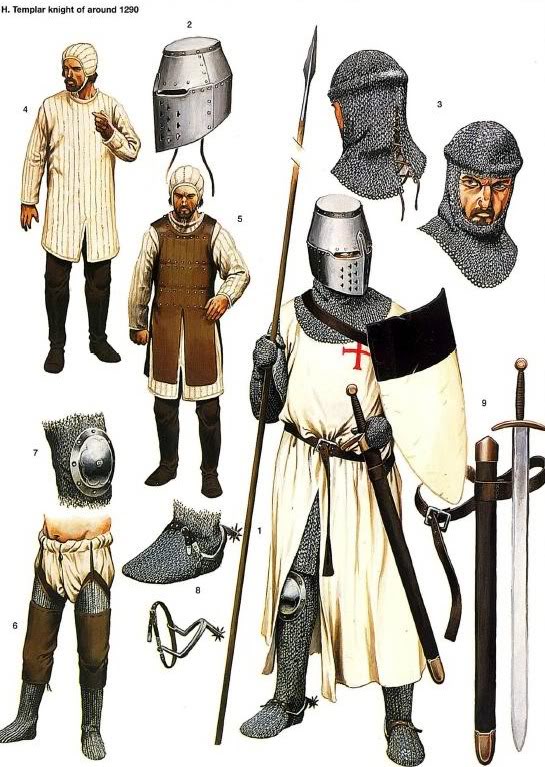
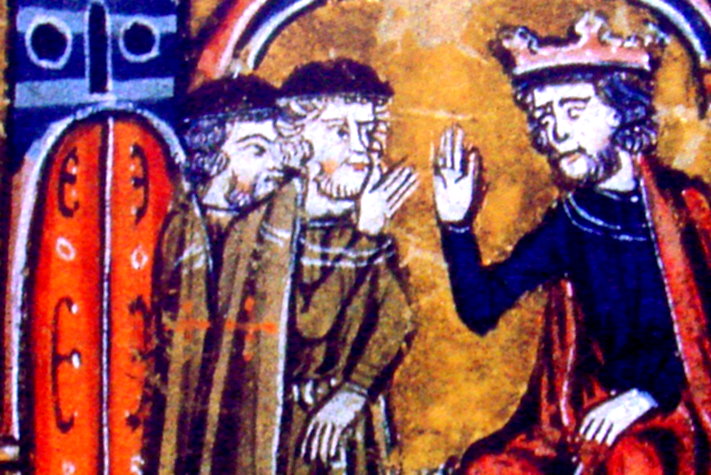

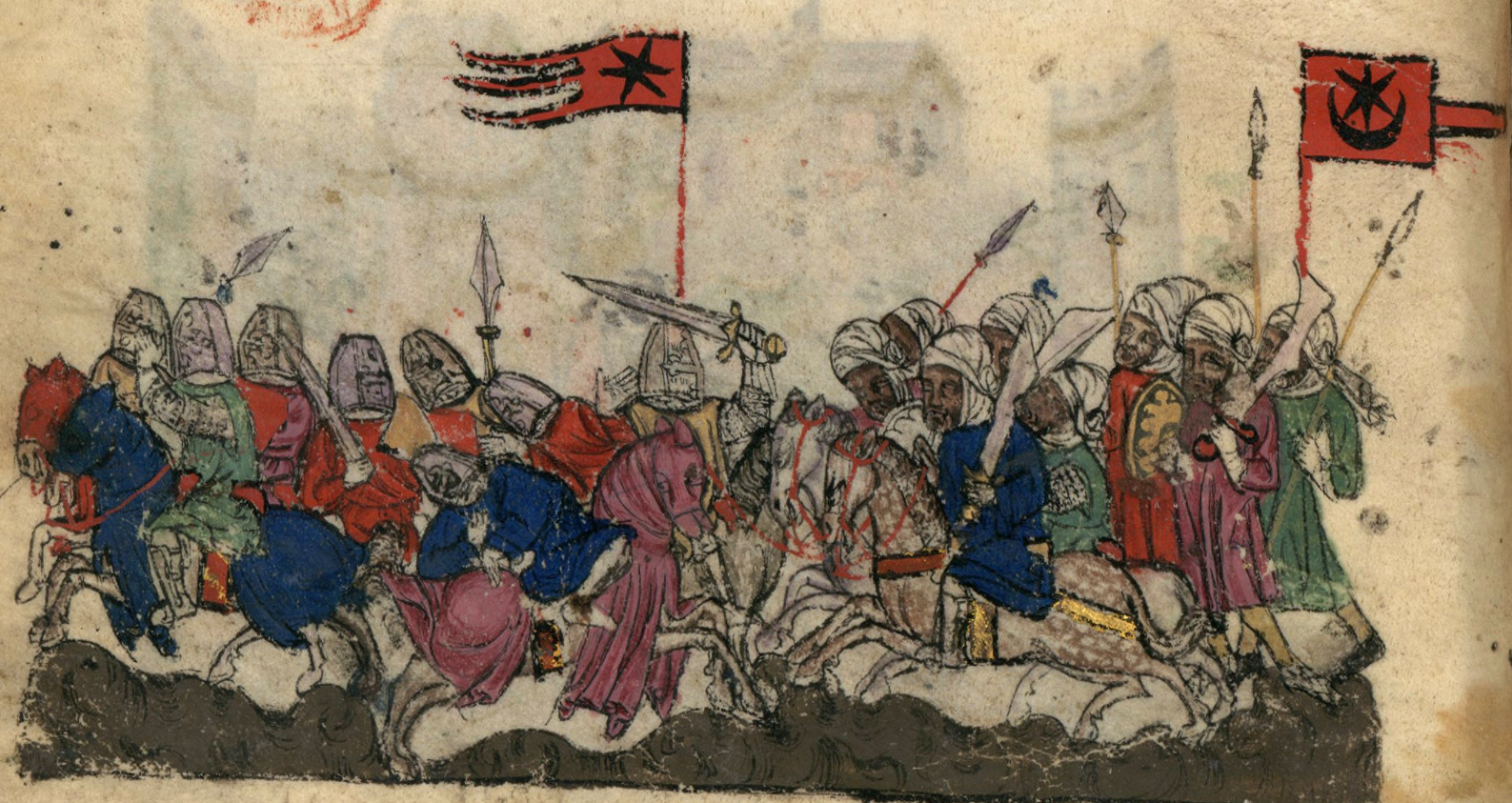

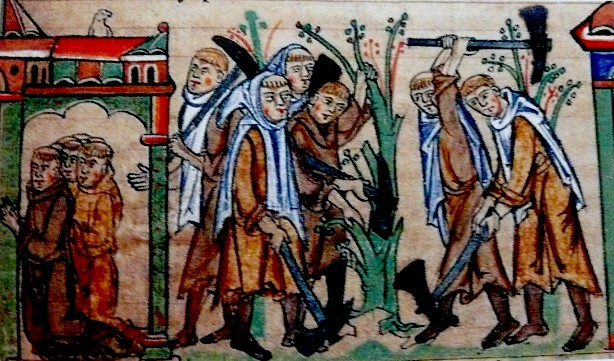
.png)








